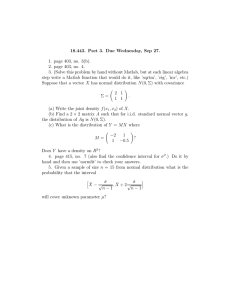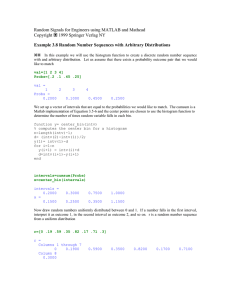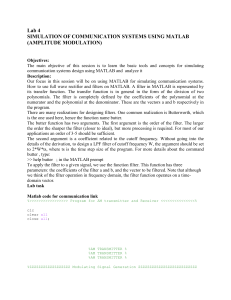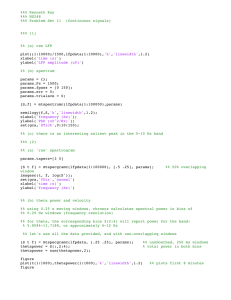ex5m1_4.doc
advertisement
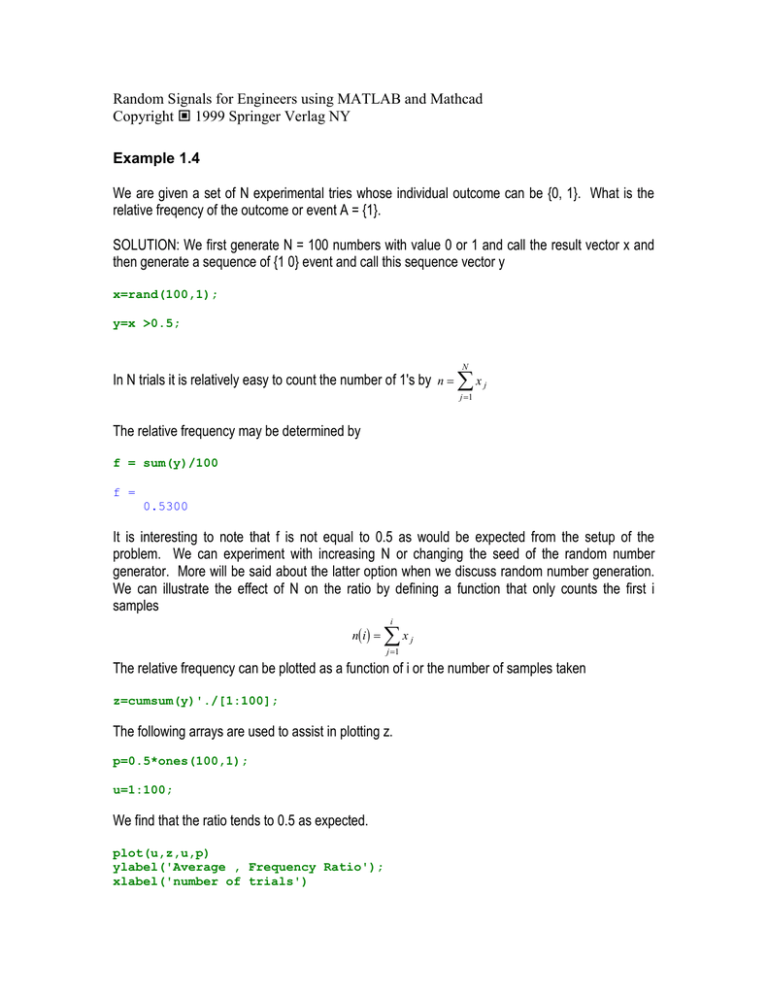
Random Signals for Engineers using MATLAB and Mathcad
Copyright 1999 Springer Verlag NY
Example 1.4
We are given a set of N experimental tries whose individual outcome can be {0, 1}. What is the
relative freqency of the outcome or event A = {1}.
SOLUTION: We first generate N = 100 numbers with value 0 or 1 and call the result vector x and
then generate a sequence of {1 0} event and call this sequence vector y
x=rand(100,1);
y=x >0.5;
N
In N trials it is relatively easy to count the number of 1's by n x j
j 1
The relative frequency may be determined by
f = sum(y)/100
f =
0.5300
It is interesting to note that f is not equal to 0.5 as would be expected from the setup of the
problem. We can experiment with increasing N or changing the seed of the random number
generator. More will be said about the latter option when we discuss random number generation.
We can illustrate the effect of N on the ratio by defining a function that only counts the first i
samples
n i
i
x
j
j 1
The relative frequency can be plotted as a function of i or the number of samples taken
z=cumsum(y)'./[1:100];
The following arrays are used to assist in plotting z.
p=0.5*ones(100,1);
u=1:100;
We find that the ratio tends to 0.5 as expected.
plot(u,z,u,p)
ylabel('Average , Frequency Ratio');
xlabel('number of trials')
1
Average , Frequency Ratio
0.9
0.8
0.7
0.6
0.5
0.4
0
10
20
30
40
50
60
number of trials
70
80
90
100
These functions can be used in place of the Matlab built in function cumsum and y=x>0.5 notation:
function y=partsum(x,n)
xs = 0;
for i= 1:n
xs = xs+x(i);
end
y=xs;
function y=ifeval(x,a)
for i=1:size(x)
if x(i)> a
y(i)= 0;
else
y(i) = 1;
end
end
